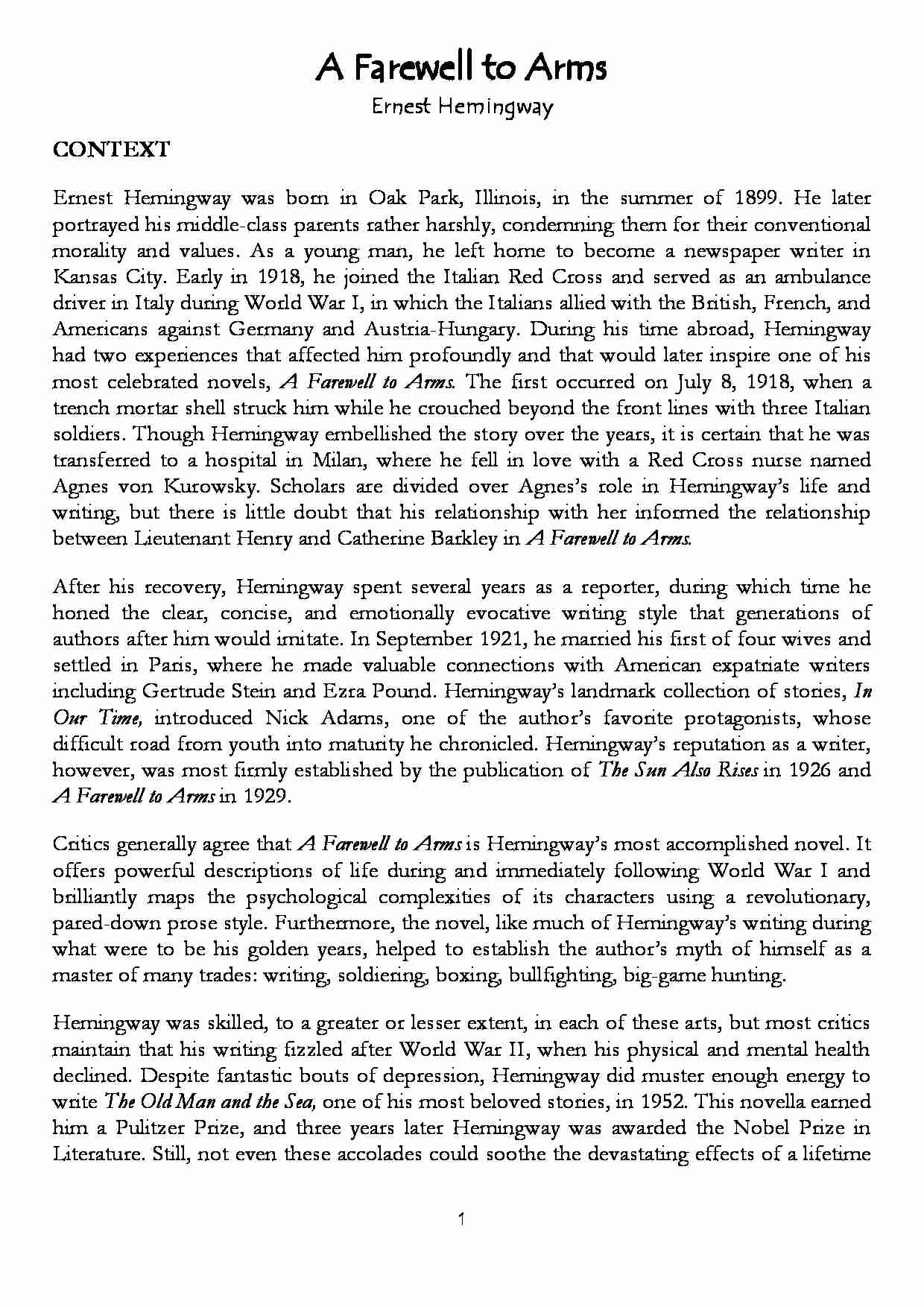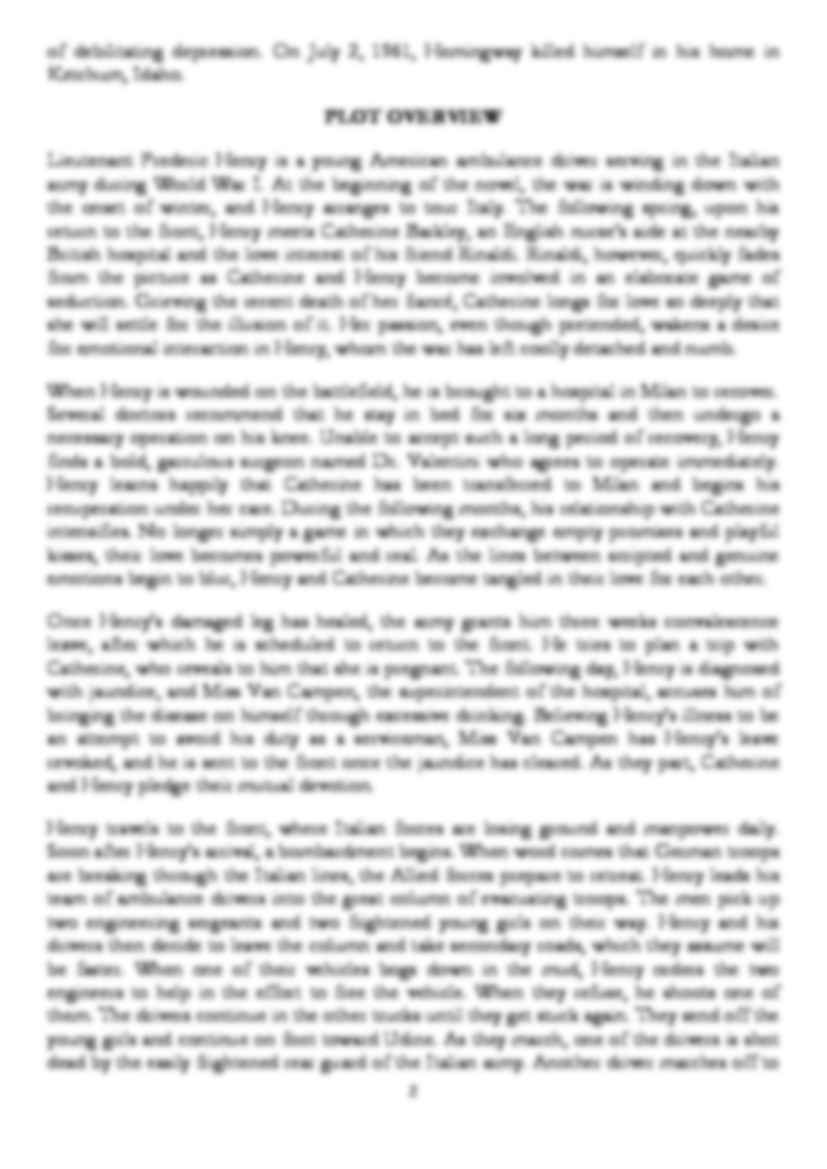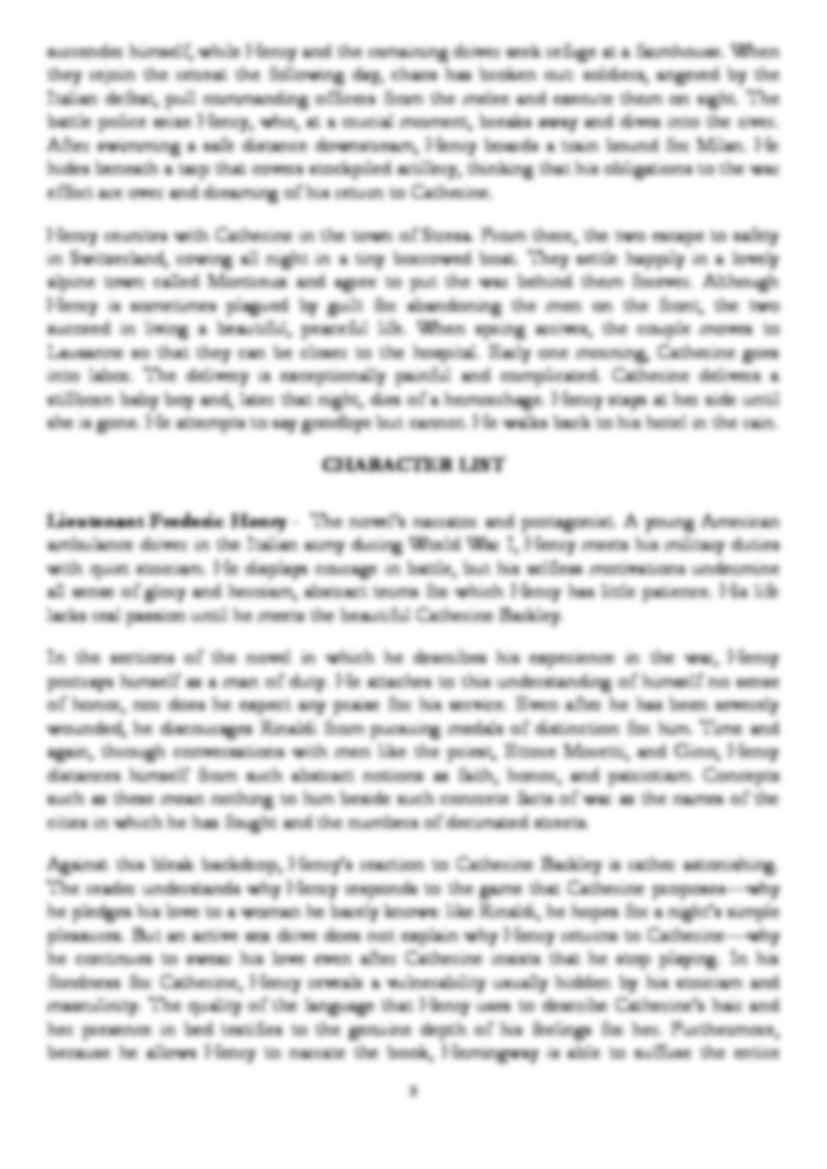A Farewell to Arms
Ernest Hemingway
Context
Ernest Hemingway was born in Oak Park, Illinois, in the summer of 1899. He later portrayed his middle-class parents rather harshly, condemning them for their conventional morality and values. As a young man, he left home to become a newspaper writer in Kansas City. Early in 1918, he joined the Italian Red Cross and served as an ambulance driver in Italy during World War I, in which the Italians allied with the British, French, and Americans against Germany and Austria-Hungary. During his time abroad, Hemingway had two experiences that affected him profoundly and that would later inspire one of his most celebrated novels, A Farewell to Arms. The first occurred on July 8, 1918, when a trench mortar shell struck him while he crouched beyond the front lines with three Italian soldiers. Though Hemingway embellished the story over the years, it is certain that he was transferred to a hospital in Milan, where he fell in love with a Red Cross nurse named Agnes von Kurowsky. Scholars are divided over Agnes's role in Hemingway's life and writing, but there is little doubt that his relationship with her informed the relationship between Lieutenant Henry and Catherine Barkley in A Farewell to Arms. After his recovery, Hemingway spent several years as a reporter, during which time he honed the clear, concise, and emotionally evocative writing style that generations of authors after him would imitate. In September 1921, he married his first of four wives and settled in Paris, where he made valuable connections with American expatriate writers including Gertrude Stein and Ezra Pound. Hemingway's landmark collection of stories, In Our Time, introduced Nick Adams, one of the author's favorite protagonists, whose difficult road from youth into maturity he chronicled. Hemingway's reputation as a writer, however, was most firmly established by the publication of The Sun Also Rises in 1926 and A Farewell to Arms in 1929.
Critics generally agree that A Farewell to Arms is Hemingway's most accomplished novel. It offers powerful descriptions of life during and immediately following World War I and brilliantly maps the psychological complexities of its characters using a revolutionary, pared-down prose style. Furthermore, the novel, like much of Hemingway's writing during what were to be his golden years, helped to establish the author's myth of himself as a master of many trades: writing, soldiering, boxing, bullfighting, big-game hunting.
Hemingway was skilled, to a greater or lesser extent, in each of these arts, but most critics maintain that his writing fizzled after World War II, when his physical and mental health declined. Despite fantastic bouts of depression, Hemingway did muster enough energy to write The Old Man and the Sea, one of his most beloved stories, in 1952. This novella earned him a Pulitzer Prize, and three years later Hemingway was awarded the Nobel Prize in Literature. Still, not even these accolades could soothe the devastating effects of a lifetime of debilitating depression. On July 2, 1961, Hemingway killed himself in his home in Ketchum, Idaho.
... zobacz całą notatkę






Komentarze użytkowników (0)